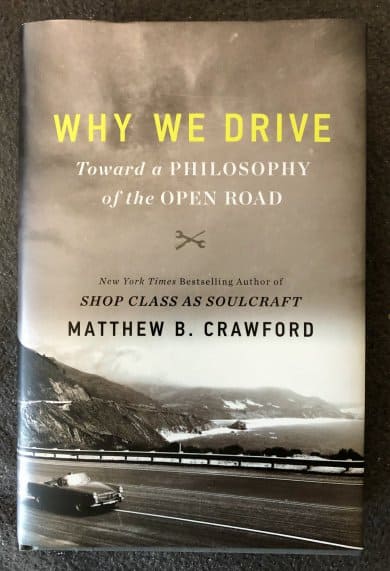For those born so far in this century and for most of the last, securing a driver’s license has been a rite of passage, a ticket to freedom of movement, a certificate of the right to life, liberty and the pursuit of happiness as an almost-adult human being who has achieved an officially and certified degree of acuity and dexterity.
Or so it was. Recently, computers have been taught to drive. And if that seems upsetting enough, there’s another whole level of shock to the ego that awaits when you learn that rats have been taught to drive. Yes, you read that correctly, rats!

Only 59 pages into Why We Drive: Toward a Philosophy of the Open Road, we come across a chapter labeled “Project Rat Rod,” which we thought would be about the emergence of the steampunk-style of homebuilt hot rods. Instead, this chapter informs about how cognitive psychologist L. Elizabeth Crawford (the wife of the book’s author) and her University of Richmond associate Kelly Lambert have taught a group of rats how to drive miniature cars.
“As I see it, this work has a clear upshot for human beings,” writes Matthew B. Crawford, car guy (drives a 1970 Karmann Ghia and is hot-rodding a vintage Beetle), holder of an undergrad degree in physics, a Ph.D. in political philosophy, and previously wrote Shop Class as Soulcraft, which at least one reviewer rated aside the seminal Zen and the Art of Motorcycle Maintenance.
In Why We Drive, Crawford shares the aforementioned “clear upshot” in the concluding paragraph of the Rat Rod chapter, and throughout the book writes not only about the joy of driving a car and of riding a motorcycle, but about the threat to such activities presented by cars that drive themselves.
Apparently rats that drive aren’t an issue beyond his wife’s lab.
“What, then, is so special about driving? That is the animating question of this book,” Crawford writes in the book’s Introduction, almost immediately answering his question with a warning about an automated automotive future.
Driving, he writes, involves finding our way through the world by the exercise of our own wiles, but at the same time we do this while participating in a form of democracy, in a social trust with those with whom we share the road.
Yes, this system is open to mistakes — and you’ll enjoy his chapter on road rage around the world. But such mistakes are not tolerated by automated driving systems and their promoters, who have their own motives for instilling control over our routes.
As I read, I mark passages with a highlighter, so I can flip through pages later to read them again. My copy of Why We Drive is littered with such markings. Further, if I find a passage of particular importance for future contemplation, I make another mark on the outside edge of the page, so I can return quickly to that spot. Usually, I might leave a couple such edgings; my copy of Why We Drive has more than half a dozen.
We could have long conversations about them, and about the chapters in which Crawford takes detours off the roadways of the future to have some fun with old cars, with off-road racing, and such.
Instead, I simply encourage you to read this book for yourself and see what you mark, what you want to go back and read again as you consider not only your own automotive future and that of your children, their children and their children.
I read this book against the backdrop of what is happening in cities, such as Portland, where protests have become an excuse for vandalism and federal retaliation, and find it horrifying to note that in a self-driving world, rogue dissidents — people who actually drive themselves — might not be tolerated.
So, I’ll leave you with this:
“To drive is to exercise one’s skill at being free,” Crawford writes, “and I suspect that is why we love to drive.”
But for how much longer?
Reviewed
Why We Drive: Toward a Philosophy of the Open Road
By Matthew B. Crawford
William Morros/HarperCollins, 2020
ISBN 978 006 274196 7
Hardcover, 360 pages





